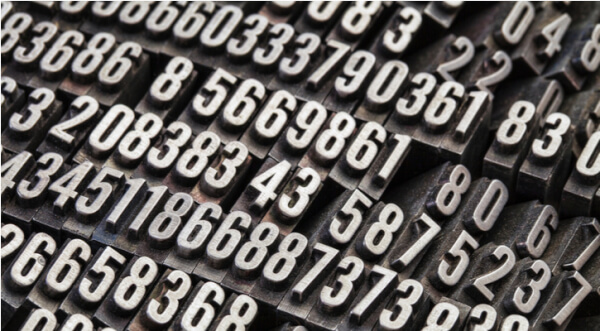How do I transfer money from my U.S. bank account? (Full guide)
If you want to transfer money to your US bank account, but not sure how, you've come to the right place. In this guide, we'll show you the answer.

Moving to Mexico? ¡Felicidades! To make the most of your time in the country, you’ll need to find out how to handle your money there. In Mexico, that involves several different numbers and codes, which can get a little confusing. Here’s a guide to which is which, and what each of them is for.
A Clave Bancaria Estandarizada (CLABE) is a standard bank account number in Mexico. Its name translates to ‘standardized banking code’. Every Mexican bank account has a unique CLABE. They’re needed in particular for sending and receiving money between accounts.
(Source 8 February 2018)
CLABE numbers have 18 digits, divided into 4 sections like this: AAABBBCCCCCCCCCCCD.
The first three digits denote the bank, and the second three digits refer to the location of the bank. The 11-digit third section is the bank’s own code to identify each of its customers unique account. The final digit is a control, which checks the validity of the previous 17 digits.
Here is an example of a CLABE number:
014027000000000008
014 is the code for Banco Santander; 027 is the code for Tijuana; the 0s are the section that identifies the account; and the 8 at the end is the checking digit.
Check with your bank, as the best method might vary. But it should be on official documentation from your bank such as a bank statement, or else in your online banking portal. Give your bank a call if you can’t find it anywhere.
You can check your number online with a CLABE validator.
(Source 1, Source 2, 8 February 2018)
ABM stands for Asociación de Bancos de México (Banking Association of Mexico). That’s the organization that links all the Mexican banks together.
The ABM code or bank code is the three-digit code that identifies the bank itself. It’s the first three digits of your CLABE.
Here are the 10 largest banks in Mexico and their ABM codes.
| ABM (bank) code | Shortened bank name | Full bank name in Mexico |
|---|---|---|
| 012 | Bancomer | Grupo Financiero BBVA Bancomer, S.A. de C.V. |
| 014 | Santander México | Grupo Financiero Santander Mexico, S.A.B. de C.V. |
| 002 | Banamex (Banco Nacional de México) | Grupo Financiero Banamex S.A. de C.V. |
| 072 | Banorte | Grupo Financiero Banorte, S.A.B. de C.V. |
| 021 | HSBC México | Grupo Financiero HSBC, S.A. de C.V. |
| 036 | Inbursa | Grupo Financiero Inbursa, S.A.B. de C.V. |
| 044 | Scotiabank México | Grupo Financiero Scotiabank Inverlat, S.A. de C.V. |
| 006 | Bancomext | Banco Nacional de Comercio Exterior, S.N.C. |
| 037 | Interacciones | Grupo Financiero Interacciones, S.A. de C.V. |
| 030 | Banco del Bajío | Banco del Bajío, S.A, Institución de Banca Múltiple |
(Source 1, Source 2, 8 February 2018)
RFC stands for Registro Federal de Contribuyentes, and the clave RFC (RFC number) is a Mexican tax identification number. It’s issued by the Mexican Tax Administration Service (Servicio de Administración Tributaria).
RFCs are 13 digits long for individuals, 12 for companies, and they’re made up of letters and numbers. The first 4 digits for individuals, or 3 for companies, are taken from the name, then there are six numbers denoting the date of birth or when the business was founded, and the end digits are check digits.
(Source 1, Source 2, 8 February 2018)
If you pay taxes in Mexico, you’ll probably need an RFC. However, you don’t have to be a Mexican national to get one.
(Source 8 February)
As an individual, you’ll need your CURP (see below) or birth certificate, proof of address, and official ID. Businesses need to prove they’re incorporated and that the person registering the company is authorized to do so.
(Source 8 February 2018)
You can start your application on the Treasury website before completing it at an official office near where you live. When registering online, there will be some forms that you should print out and take with you to your appointment, along with the ID documents outlined above.
(Source 8 February 2018)
A CURP is a Clave Única de Registro de Población (Unique Population Registry Code). It’s an 18-digit social security number for people living in Mexico. The 18 characters combine information deriving from your name, date and place of birth, and gender to create a unique code.
You’ll need this number for all manner of things, from applying for an RFC (see above) to applying for jobs or getting a driving license - or even opening a bank account.
The code is issued on a card known as a CURP card.
(Source 8 February 2018)
The Mexican government issues CURPs.
You need to get a CURP if you’re a Mexican citizen or resident.
(Source 8 February 2018)
For children, the accompanying parent’s credentials are needed too.
You should get a printed document, although it might just be a piece of paper - laminating it to keep it safe is a good idea. If you lose it, you can look the number up online and print another one.
(Source 8 February 2018)
Getting set up in Mexico is one thing, but dealing with your finances in both Mexico and your home country can be just as tough. Sending money to Mexico through a bank or a normal transfer service can mean suffering a markup on the exchange rate of 4-5%. Rather than losing out on that much money, using Wise can make the whole process far smoother by only charging the mid-market exchange rate - the only real rate there is - and one small fee stated upfront. That could end up saving you a lot of money.
And with a borderless multi-currency account, you can store your money in dozens of different currencies as well as the Mexican peso and use the debit card to access your money with ease. So if you have a lot of payments to make, this is the perfect way to do it without having to pay all manner of extra fees. It’s particularly useful at the start of your time in Mexico, while you get set up with a CURP.
Take a look now at how much cheaper Wise is than a bank transfer.
Good luck as you sort out all of your Mexican details!
*Please see terms of use and product availability for your region or visit Wise fees and pricing for the most up to date pricing and fee information.
This publication is provided for general information purposes and does not constitute legal, tax or other professional advice from Wise Payments Limited or its subsidiaries and its affiliates, and it is not intended as a substitute for obtaining advice from a financial advisor or any other professional.
We make no representations, warranties or guarantees, whether expressed or implied, that the content in the publication is accurate, complete or up to date.

If you want to transfer money to your US bank account, but not sure how, you've come to the right place. In this guide, we'll show you the answer.

What are BSB numbers in banking & how do they work? Do you want to find out more about BSB codes? Read more here.

Your full guide to US banking expressions, from ABA to wire.

Your full guide to what is SWIFT and its meaning in banking.

Sending money abroad should be easy, but there might be some terms you aren't familiar with. So, we'll show you the difference between IBAN vs SWIFT codes.

IOF is a tax on various types of financial transactions in Brazil — including foreign exchange, investments, and credit. It’s levied at a range of rates...